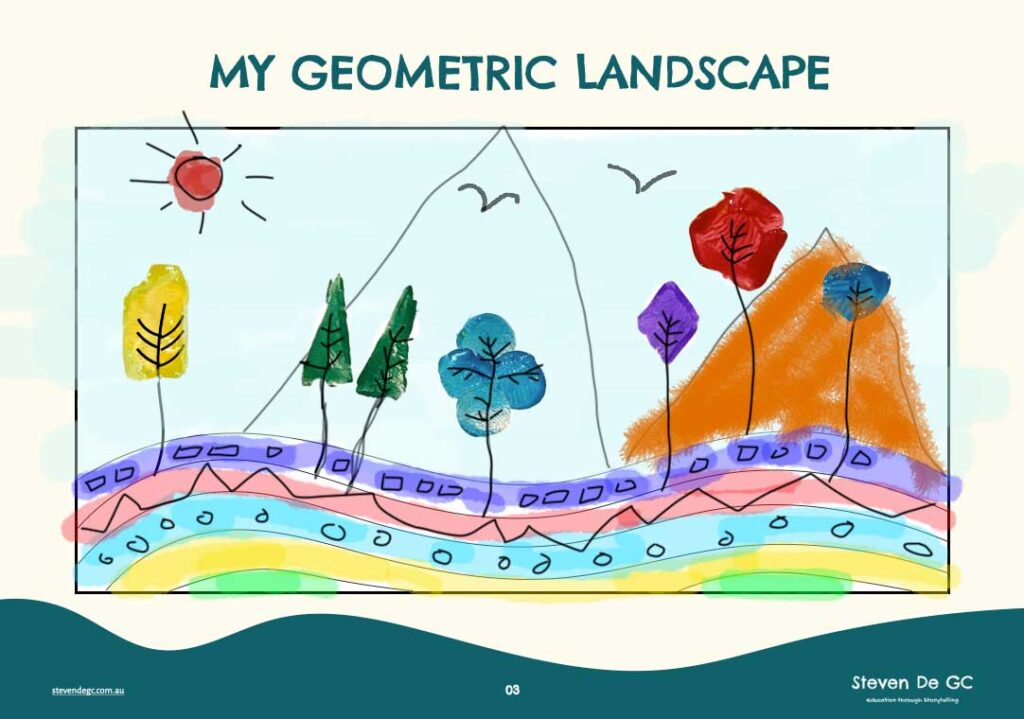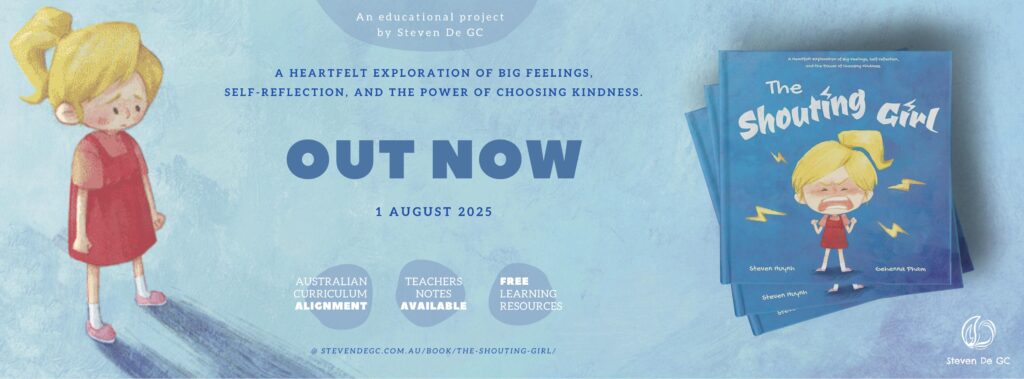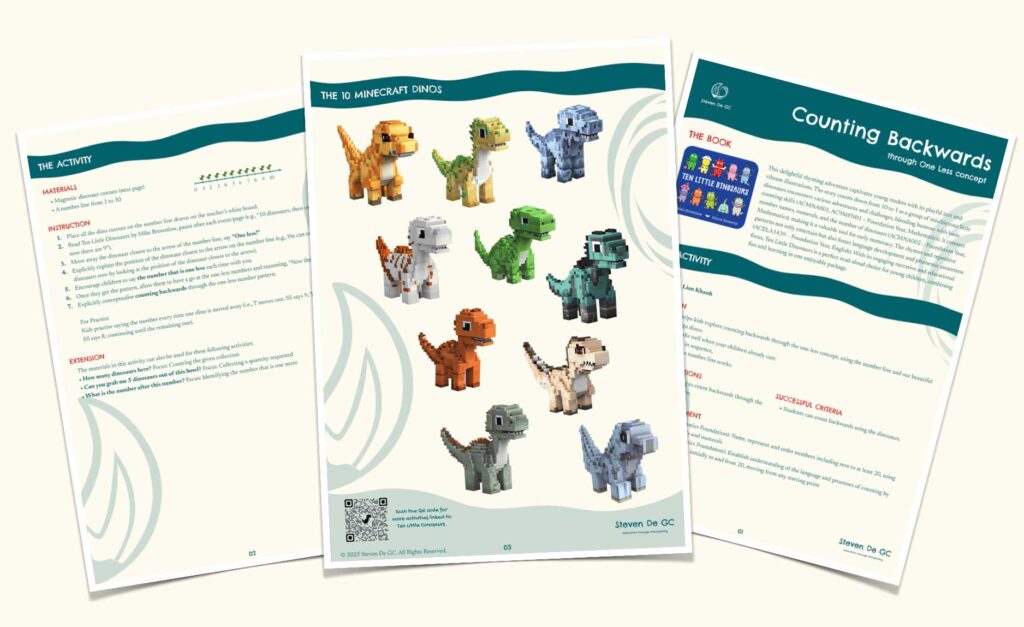Written & illustrated by Bronwyn Bancroft, published by Little Hare Books
The book is an artistic exploration of Australia’s diverse landscapes through the lens of geometric shapes. The book introduces young readers to the natural world by identifying and describing various shapes found in the environment, such as circles in the treetops, triangles in the mountains, and spirals in shells. This aligns with the learning objective AC9MFSP01, ACMMG006 (Mathematics, Foundation Year), which focuses on identifying and describing familiar two-dimensional shapes in the environment. Additionally, the book supports AC9AVAFD01, ACAVAM106 (Visual Arts, Foundation Year) by encouraging young readers to explore how visual arts express ideas about the world. Through Bancroft’s detailed and culturally rich illustrations, children learn to interpret and appreciate the unique beauty of Country through the use of shapes and patterns in visual storytelling. This beautifully illustrated book not only enhances children’s geometric understanding but also deepens their appreciation for the visual arts, making it a valuable resource for integrated learning in mathematics and art.















Leave a Reply